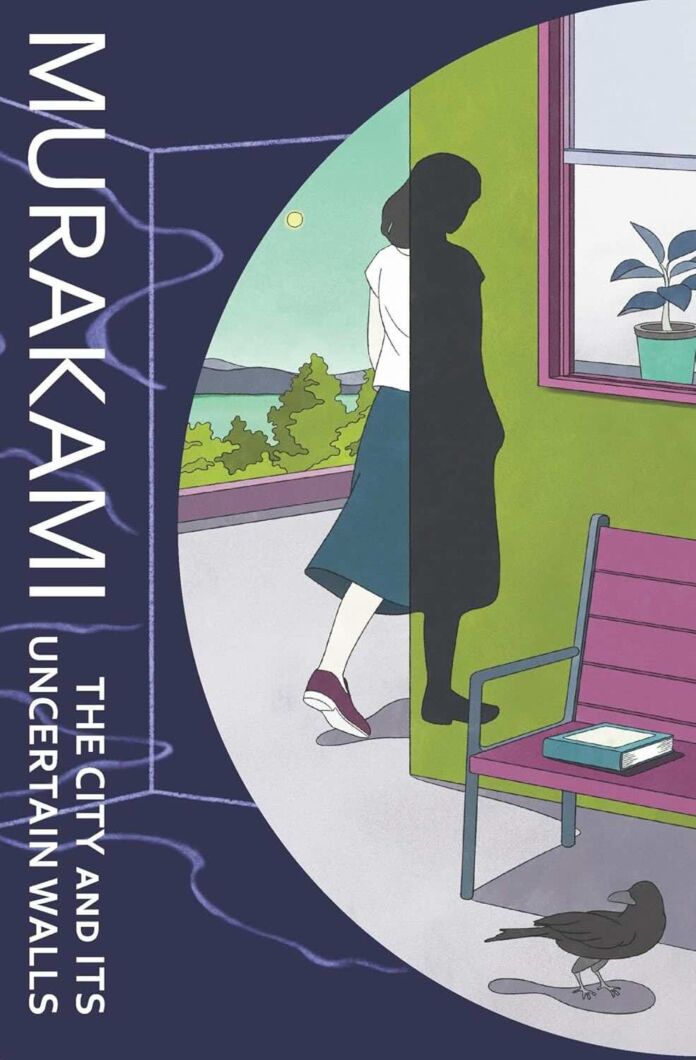In his latest novel, The City and Its Uncertain Walls, Haruki Murakami weaves an intricate tapestry of reality and fantasy, creating a meditation on love, loss, and the power of memory that both enchants and challenges readers. Like his previous works such as Kafka on the Shore and Hard-Boiled Wonderland and the End of the World, this novel demonstrates Murakami’s mastery of magical realism while venturing into new emotional territory.
The Story: A Tale of Two Worlds
At its heart, the novel follows an unnamed protagonist whose life is forever altered when his teenage love mysteriously vanishes. This disappearance sets him on a decades-long journey that oscillates between two realities: our mundane world and a mysterious walled city where unicorns roam and shadows can be separated from their owners. The protagonist eventually becomes a librarian in a small mountain town, where he encounters the ghost of his predecessor, Mr. Koyasu, and a peculiar young boy obsessed with the Beatles’ Yellow Submarine.
Masterful Storytelling and Thematic Depth
Murakami’s prose is characteristically hypnotic, drawing readers into a dreamlike narrative that feels both surreal and deeply grounded in human experience. His description of the walled city, with its handless clock tower and library full of dreams instead of books, creates an atmosphere that lingers in the reader’s mind long after the final page.
Key Themes
- The nature of reality and consciousness
- The persistence of first love
- The relationship between memory and identity
- The power of books and libraries as repositories of human experience
- The weight of loneliness and connection in modern life
Literary Craftsmanship
What sets this novel apart is Murakami’s skillful handling of parallel narratives. The story moves seamlessly between the protagonist’s present life as a librarian and his experiences in the walled city, creating a sense of temporal fluidity that mirrors the novel’s themes about the nature of reality and memory.
Strengths:
- Masterful prose that balances the surreal with the mundane
- Complex character development, particularly of the protagonist and Mr. Koyasu
- Innovative use of magical realism to explore psychological depths
- Rich symbolism that rewards close reading
- Thoughtful exploration of human connection and isolation
Areas for Improvement:
- Some readers may find the pacing slow in the middle sections
- The parallel narratives can occasionally feel disorienting
- Certain symbolic elements (like the scallions left by Mr. Koyasu’s wife) remain frustratingly unexplained
- The resolution may feel too ambiguous for readers seeking concrete answers
Cultural and Literary Context
The novel continues Murakami’s tradition of blending Western cultural references with Japanese storytelling techniques. The inclusion of elements like Yellow Submarine alongside traditional Japanese concepts creates a unique cultural hybrid that speaks to contemporary global experiences.
Style and Structure
Murakami’s writing style remains consistently engaging, with his trademark ability to make the extraordinary feel ordinary and vice versa. The novel’s structure, while complex, serves its themes well, mirroring the protagonist’s journey between worlds and states of consciousness.
Character Analysis
The protagonist’s journey from lovesick teenager to middle-aged librarian is portrayed with remarkable psychological insight. Supporting characters, particularly Mr. Koyasu and the Yellow Submarine boy, are drawn with depth and nuance that elevate them beyond mere plot devices.
Comparative Analysis
While the novel shares DNA with Murakami’s previous works, particularly in its use of parallel worlds (1Q84) and mysterious disappearances (The Wind-Up Bird Chronicle), it breaks new ground in its exploration of libraries as metaphysical spaces and its treatment of ghosts as bridges between worlds.
Impact and Significance
The City and Its Uncertain Walls represents a mature work from an author at the height of his powers. It demonstrates Murakami’s continued ability to evolve as a writer while maintaining the elements that have made his work so beloved by readers worldwide.
Final Verdict
Despite some minor pacing issues and occasionally opaque symbolism, this novel stands as a significant achievement in Murakami’s oeuvre. It successfully combines his signature elements—parallel worlds, mysterious disappearances, cats, and music—with fresh insights into love, loss, and the nature of reality.
The City and Its Uncertain Walls is highly recommended for:
- Existing Murakami fans
- Readers who enjoy magical realism
- Those interested in Japanese literature
- Anyone who has ever worked in or loved libraries
- Readers who appreciate complex, multilayered narratives
Similar Works Worth Exploring
- Hard-Boiled Wonderland and the End of the World by Haruki Murakami
- The Shadow of the Wind by Carlos Ruiz Zafón
- The Library at Mount Char by Scott Hawkins
- The Starless Sea by Erin Morgenstern
In conclusion, The City and Its Uncertain Walls is a worthy addition to Murakami’s impressive body of work. While it may not convert skeptics, it offers devoted readers a rich, rewarding experience that showcases the author’s enduring ability to illuminate the mysterious connections between reality and dreams, love and loss, and the seen and unseen worlds that shape our lives.
This novel reminds us why Murakami remains one of contemporary literature’s most important voices, capable of creating worlds that are simultaneously familiar and strange, comforting and unsettling, and always profoundly human.





